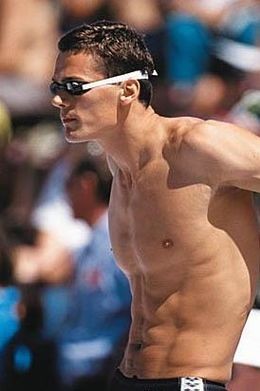Hi Peak Performer! Are you watching the Olympics? If you are, you'll know Canada is getting it done in the pool. And the women are leading the way with a silver in the 4x100 m free relay including Taylor Ruck. What an anchor leg by Penny Oleksiak? Amazing! This was followed with a gold by Maggie Mac Neil in the 100 m fly. She was 7th at the turn an...
Lessons from the ISL Pro Swim League
- Chris Collins
- Fitness
- 1546 Hits
- 0 Comments
-
Success leaves clues. And there can a lot of value is studying someone that's at a level where we'd like to be. This can be true of watching a professional athlete compete and paying attention to what they are doing differently or at a higher level. The ISL (International Swim League) has kicked off season two in Budapest, Hungary. The best swimmers in the world, including Kierra Smith from Kelowna, are competing as part of teams including the LA Current, which Kierra is on, as well as the newly formed Toronto Titans. Last week we had a number of swimmers in for training while the ISL races were happening. So we put the races on the TV while they were training. And it was interesting to see what the best in the world were doing differently than everyone else. For example, Caleb Dressel, Chad Le Clos, Sarah Sjostrom and Florent Manadou were better than the rest when it came to this aspect of the races. And the commentators were picking up on it. Can you guess what it was? It was how strong they were off the wall. Dressel, Le Clos, Sjostrom and Manadou were surging ahead during the underwater portion of the turn. Or if they were slightly behind at the turn they were able to close this gap and catch the leader by the end. So why were they better off the wall? This can be summed up into three main things they are doing well which are: A strong push off the wallA seamless streamline positionA strong and stable core Let's look at each in more detail below. A Strong Push Off the Wall The turn is different than the start in that the feet contact the wall with motion as opposed to a static position for the...
9 Reasons Swimmers Should Train Differently During COVID-19
- Chris Collins
- Fitness
- Training
- 1510 Hits
- 0 Comments
-
The coronavirus has resulted in sports teams and leagues being cancelled until safe to resume. With athletes not practicing or competing with their teams, not to mention schooling from home, this has resulted in a lot of free time for athletes. Many are looking to use this downtime to fill their schedules and establish a routine. A great way to do this is with strength and conditioning sessions. There's only one problem... Swimming is not like any other sports. And they need to train differently during this pandemic than soccer, basketball, hockey or football players. Below are 9 Reasons Swimmers Should Training Differently During COVID-19. #1 - All Volume Is Not Created Equal - Do you know any swimmers? I don't mean recreational swimmers or even triathletes for that matter. I mean school-age kids that swim year-round with a club. If not, would you believe they can spend between 15-20 hours per week training in the pool? This includes five evenings per week for 2 hours each plus anywhere from 3-6 days week in the morning as well. Basically this is a ton of volume. To put this in perspective consider that the 200 m in track & field and the 50 m free in swimming will both take about 20 s. Usain Bolt holds the men's world record at 19.30 and it's 20.91 for the 50 m free held by Cesar Cielo. So swimming the same amount of time as sprinting covers 1/4 of the distance i.e. 50 m versus 200 m. There is no way a runner would ever expect to train the same volume with running that a swimmer does in the pool. For example, if a swimmer put in 75 km of volume in a week (very high) the equivalent volume would 300 km for a runner...
